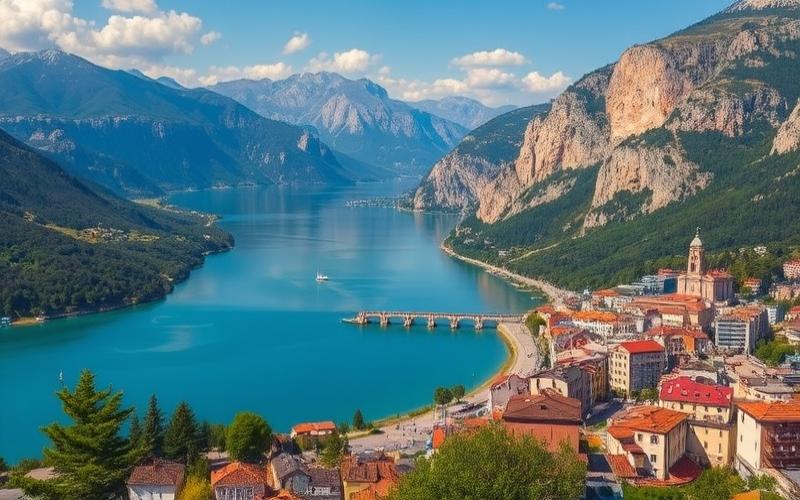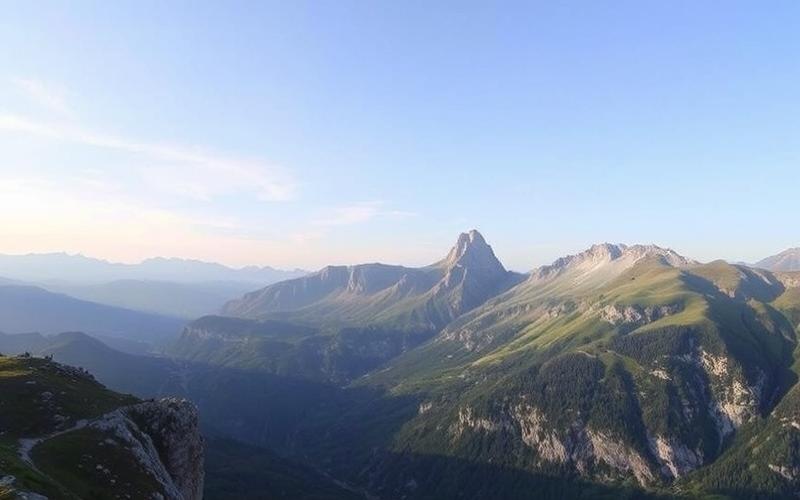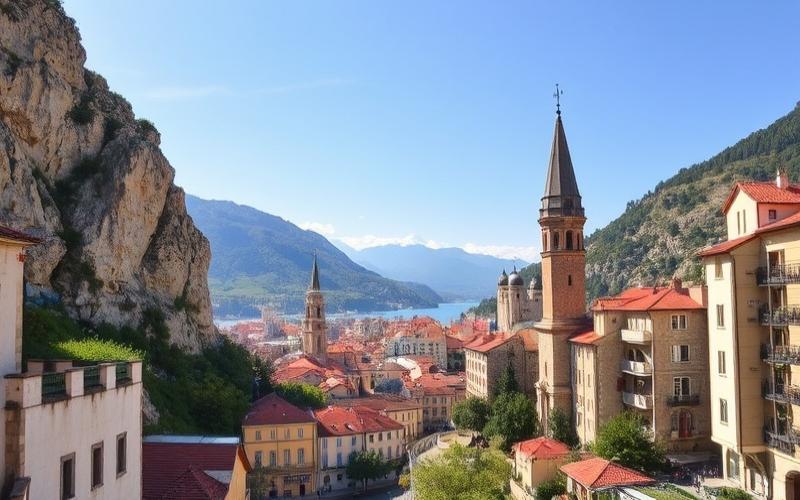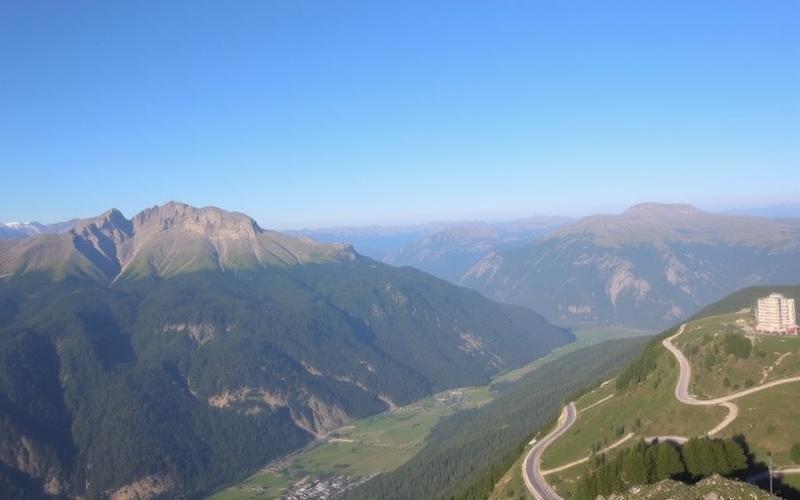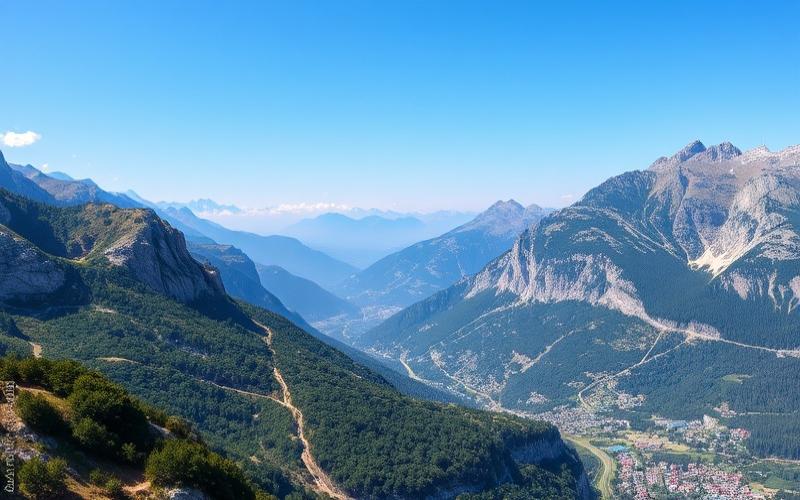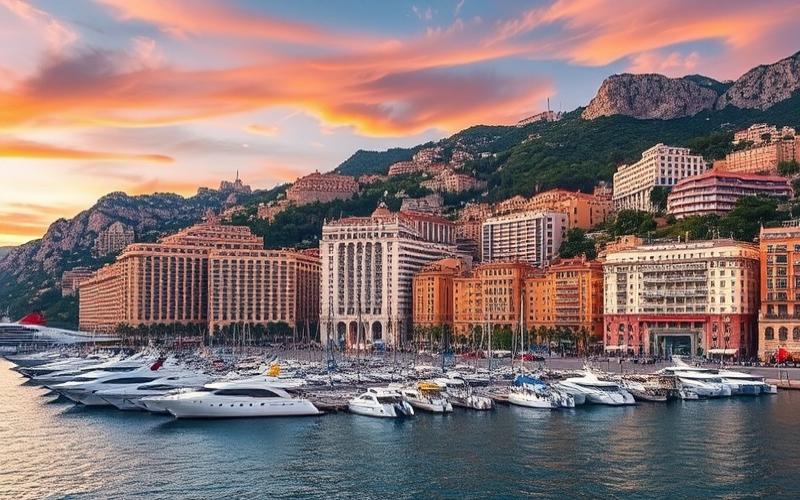
 Published on and written by Cyril Jarnias
Published on and written by Cyril Jarnias
Montenegro, a small Balkan country experiencing rapid economic growth, offers numerous opportunities for foreign entrepreneurs and investors. However, to succeed in this emerging market, it’s crucial to properly protect your intellectual property. This guide presents the essential elements you need to know to secure your intangible assets in this rapidly developing country.
Since gaining independence in 2006, Montenegro has significantly modernized its intellectual property legal framework, particularly to align with European standards as part of its EU accession process. The country joined the World Intellectual Property Organization (WIPO) in 2006 and has ratified the main international treaties in this field.
Despite these advances, effective intellectual property rights protection remains a challenge in Montenegro. The country still appears on the U.S. Special 301 Report Watch List, which highlights shortcomings in intellectual property law enforcement. Foreign companies must therefore remain vigilant and adopt a proactive strategy to protect their intangible assets in this promising yet complex market.
Treasures to Protect: Overview of Intellectual Property Rights in Montenegro
The Montenegrin intellectual property system covers the main categories of rights recognized internationally:
- Patents: They protect technical inventions for a period of 20 years from the filing date.
- Trademarks: They distinguish a company’s products and services for a period of 10 years, renewable indefinitely.
- Industrial designs: They protect a product’s appearance for an initial period of 5 years, renewable up to a maximum of 25 years.
- Copyright: It protects original literary, artistic, and scientific works throughout the author’s life and 70 years after their death.
- Geographical indications: They identify a product as originating from a specific territory.
Montenegro also introduced a law on trade secret protection in 2019, aligned with the European directive on the matter. This law offers enhanced protection for confidential information with commercial value.
It’s important to note that protection of these rights is not automatic in Montenegro. With the exception of copyright, which arises upon creation of the work, other types of intellectual property require formal registration with the competent authorities to benefit from legal protection.
Good to Know:
Montenegro recognizes the main types of intellectual property, but their effective protection generally requires formal registration. A proactive strategy is essential to secure your intangible assets in this country.
From Idea to Right: Key Steps to Register Your Intellectual Property
Intellectual property rights registration in Montenegro is handled by the Intellectual Property Office of Montenegro (IPOM), under the Ministry of Economy. Here are the main steps to follow:
1. Prior art search: Before filing an application, it’s highly recommended to conduct a thorough search to ensure your right doesn’t conflict with existing rights. IPOM offers search services, but it’s often preferable to engage a local expert for a comprehensive analysis.
2. Document preparation: The application must be written in Montenegrin and include all required documents (detailed description, claims, drawings, etc.). A certified translation will be necessary if the original documents are in another language.
3. Application filing: The application can be filed directly with IPOM or online via the e-IPO system. Official fees must be paid at the time of filing.
4. Application examination: IPOM conducts a formal then substantive examination of the application. Objections may be raised, to which the applicant must respond within a specified timeframe.
5. Publication and opposition: For trademarks and industrial designs, the application is published to allow third parties to file oppositions within a 3-month period.
6. Registration: If the application is accepted and no opposition is filed (or if it’s rejected), the right is registered and a certificate is issued.
It’s important to note that Montenegro is part of the Madrid System for international trademark registration and the Hague System for industrial designs. These systems allow obtaining protection in multiple countries through a single application.
Registration timelines vary depending on the type of right: approximately 6 to 12 months for a trademark, 18 to 24 months for a patent, and 3 to 6 months for a design. These timelines may be longer if objections or oppositions occur.
Good to Know:
Intellectual property rights registration in Montenegro requires careful preparation and can take several months. It’s recommended to start the process well before launching your business in the country to ensure optimal protection.
Defending Your Rights: Strategies for Resolving Intellectual Property Disputes
Despite notable improvement in recent years, effective enforcement of intellectual property rights remains a challenge in Montenegro. Rights holders must therefore be proactive in monitoring and defending their assets. Here are the main options in case of disputes:
1. Amicable resolution: Direct negotiation or mediation are often the first recommended steps. The Arbitration Center of the Montenegrin Chamber of Commerce offers specialized intellectual property mediation services.
2. Administrative actions: IPOM can intervene in certain cases, particularly for oppositions to trademark registration applications. The Customs Administration also plays a key role in combating counterfeiting at borders.
3. Civil actions: Commercial courts have jurisdiction over intellectual property disputes. They can order provisional measures, injunctions, and damages. The Podgorica Court has had a specialized intellectual property chamber since 2018, which has improved judicial expertise in this field.
4. Criminal actions: The most serious offenses (large-scale counterfeiting, organized piracy) can lead to criminal prosecution, with penalties of up to 5 years imprisonment and substantial fines.
It’s important to note that the Montenegrin judicial system can be slow and judges sometimes lack expertise in complex intellectual property matters. An effective defense strategy will often combine multiple approaches, prioritizing quick solutions (mediation, provisional measures) while preparing more comprehensive legal actions if necessary.
Cooperation with local authorities is also crucial. Montenegro has established an Intellectual Property Rights Protection Coordination Group, bringing together different government agencies. Rights holders can collaborate with this group for coordinated actions against counterfeiting.
Good to Know:
Resolving intellectual property disputes in Montenegro can be complex. A multi-faceted approach, combining negotiation, administrative actions, and legal recourse, is often necessary to achieve effective results.
Expertise Serving Your Rights: The Importance of Specialized Legal Counsel
Navigating the Montenegrin intellectual property system can prove complex for foreign companies. Engaging specialized legal counsel is often essential for several reasons:
1. Local expertise: Montenegrin lawyers specialized in intellectual property know the nuances of the local system, authority practices, and the latest legislative developments. This expertise is valuable for developing a strategy adapted to the local context.
2. Language barrier: All official procedures are conducted in Montenegrin. A local lawyer can not only ensure document translation but also their adaptation to the specific requirements of Montenegrin authorities.
3. Legal representation: For many procedures, particularly before IPOM and courts, representation by a lawyer licensed in Montenegro is mandatory for foreign companies.
4. Professional network: Local lawyers often have a network of contacts within relevant authorities and institutions, which can facilitate communication and expedite certain procedures.
5. Due diligence: In case of acquisition or partnership in Montenegro, a specialized lawyer can conduct a thorough audit of intellectual property assets to assess risks and opportunities.
It’s recommended to choose a law firm with specific experience in intellectual property and, ideally, connections with international networks. Some Montenegrin firms have developed partnerships with international firms, thus offering combined local and global expertise.
The cost of intellectual property legal services in Montenegro is generally lower than in Western European countries, but it can vary considerably depending on the case’s complexity. It’s advisable to discuss fee structures in detail and obtain a detailed quote before engaging a lawyer.
Good to Know:
Investment in specialized legal counsel is often cost-effective in the long term, helping to avoid costly mistakes and optimize protection of your intellectual assets in Montenegro.
Protect to Prosper: Winning Strategies to Secure Your Intellectual Property
To maximize protection of your intellectual property in Montenegro, a strategic and proactive approach is essential. Here are some key recommendations:
1. Act quickly: Montenegro applies the “first-to-file” principle. It’s therefore crucial to register your rights as soon as possible, ideally before even entering the Montenegrin market.
2. Adopt a comprehensive approach: Don’t limit yourself to just one type of protection. Combine different rights (trademarks, patents, designs) to create a complete legal shield around your innovations.
3. Monitor the market: Implement a monitoring system to quickly detect any unauthorized use of your rights. Online and offline monitoring services are available in Montenegro.
4. Train your local partners: If you work with distributors or agents in Montenegro, ensure they understand the importance of intellectual property and the procedures to follow in case of infringement.
5. Use international systems: Take advantage of the Madrid and Hague systems to easily extend your protection to other countries, in anticipation of future expansion.
6. Document your creations: Keep detailed evidence of your innovation development. This can prove crucial in case of disputes over invention or work authorship.
7. Adapt your strategy: The Montenegrin market has its specificities. Don’t hesitate to adapt your trademarks or products to better meet local expectations while maintaining strong protection.
8. Collaborate with authorities: Register your rights with Montenegrin customs to facilitate detection of counterfeits at the border. Participate in awareness initiatives organized by IPOM and other government agencies.
9. Prepare a litigation strategy: Even with the best protection, disputes may arise. Prepare a response strategy in advance, identifying competent local lawyers and budgeting necessary resources.
10. Stay informed: Montenegro’s intellectual property legal framework is evolving rapidly, particularly in the context of EU accession. Ensure you stay updated on legislative and regulatory changes.
Good to Know:
An effective intellectual property protection strategy in Montenegro combines preventive action (quick registration, monitoring) and litigation preparation. Adaptability and collaboration with local stakeholders are major assets.
In conclusion, although Montenegro’s intellectual property system still presents challenges, it offers solid tools for companies that know how to use them strategically. By combining robust legal protection, active market monitoring, and close collaboration with local experts, entrepreneurs can effectively secure their innovations in this growing market.
Disclaimer: The information provided on this website is for informational purposes only and does not constitute financial, legal, or professional advice. We encourage you to consult qualified experts before making any investment, real estate, or expatriation decisions. Although we strive to maintain up-to-date and accurate information, we do not guarantee the completeness, accuracy, or timeliness of the proposed content. As investment and expatriation involve risks, we disclaim any liability for potential losses or damages arising from the use of this site. Your use of this site confirms your acceptance of these terms and your understanding of the associated risks.

